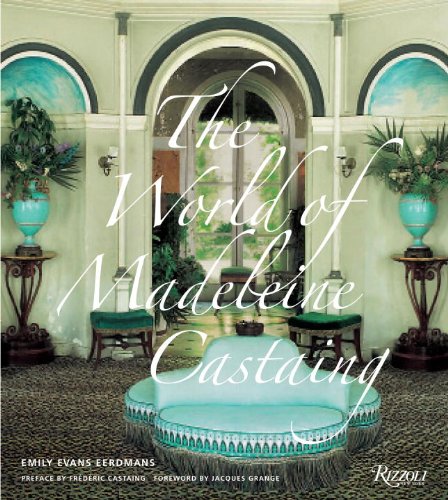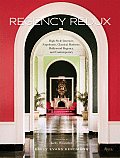
The exacting Dr. Megan Aldrich, my furniture tutor at Sotheby's Institute, despaired of the labeling of furniture after rulers' reigns. After all, the minute George II ascended the throne in 1727, there wasn't a complete overhaul of fashion with everyone throwing out their pad-footed chairs for ball-and-claw ones. However, after working in the trade for several years, I've found these labels useful as a shorthand as they tend to loosely coordinate with the change in styles from Baroque to Rococo to Neoclassicism. Useful, that is, as long as people are still au fait with them....

the Billiards Room at Malmaison, circa 1790s, designed by Percier and Fontaine for Josephine is the defining example of Directoire style
You may remember that I was aghast upon coming across the phrase "French Regency" in Vanity Fair magazine and some have asked me to elaborate. Quite simply, there is no such thing. There is French Empire, corresponding to when Napoleon was crowned emperor of France, and there is English Regency, referring to the Prince Regent's interim rule while his father George III had an interlude of insanity. He then became George IV in 1820 until his death in 1830.
Moreover, what I discovered while researching RR was that the English called their own furniture from that period (1790-1820) "English Empire", much as we call ours "American Empire", until the late 1910s, when the usage of Regency as a style term was coined by the architect Sir Alfred Richardson. So to use the term "French Regency", implying the French were following the English, is absurd. After all, the French have made it a point of national pride to lead fashion since the days of the sun king himself, Louis XIV.
Empire, Regency, po-tay-toes - po-tah-toes - what does it all mean?
In a nutshell, they both refer to a late phase of neoclassicism which was more archeologically correct in terms of replicating actual furniture from antiquity than the preceding phases of neoclassicism - i.e., Louis XVI, "Adam" or "Sheraton" style - which grafted Classical ornament onto existing European forms. To make huge generalizations, Empire and Regency are more bold and massive with complicated curtains while Louis XVI, et al, is more delicate and refined. Directoire - the period of Josephine's Malmaison - is transitional and, like Madeleine C., my fave.
Louis XVI
Directoire
Empire
English Neoclassicism -
1st Phase - Adam Style
 The Etruscan Room at Osterley Park by Robert Adam, 1761
The Etruscan Room at Osterley Park by Robert Adam, 1761Early Regency - 1790s

Living Room cum Library at Bromley Hill - note the casual arrangement of furniture left in the middle of the room













11 comments:
Emily, thank you for responding to my question about French Regency. This is a wonderful, illuminating post and i feel much wiser now about
the transition from neoclassical to regency. Yes, this is a real direction-finder. Much appreciated.
Nicely and neatly clarified.
I've noticed that John Cornforth generally refers to late Regency as the Post Waterloo Period. And I've heard it termed Fat Classical as well, to distinguish it from the attenuated, more graceful early Regency styles. Or, if you like, Butch Classical. More to the point, really.
What a fantastically informative post - thank you, it is always confusing what belongs to what period. Have a wonderful weekend, xv.
BRILLIANT, BRILLIANT BRILLIANT- You go gurl!!
Fascinating, clarifying, educational, smarty pants... a true pleasure to sit back and learn something from someone who knows her stuff and serves it up with such elegant wit. Tell us more please....
Oh, and thank you!
*Love* Toby Worthington's irreverent glossary. Very very funny.
Great article and photos. Fantastic!
Rose, isn't Mr. Worthington the best? I think we should all make a pact to refer to Regency and Empire as "Butch Classical" from now on.
I'm so relieved you weren't all bored to tears by this post - while writing it, I could just imagine your eyes all glazing over.
Great clarification Emily! I actually thought you did a superb job of explaining and differentiating between the two in RR.
Up to a point…
OUR (French) Regency (“Régence”) is the period between the death of Louis XIV (1715) and the official majority of Louis XV (1723), roughly one hundred years before the period and styles (“Regency”, “Empire”) you are referring to. Aesthetically, a very different animal: think half way between Louis XIV and Louis XV. I would refer to the early 1700s as “French Regency” to distinguish it from “English Regency”, i.e. the end of George III’s reign, in an English-speaking context, simply as “Régence” in a French context. There was no regency in France in the early XIXth C., although there were “regencies” before Louis XIII and Louis XIV came of age, due to their predecessor monarch’s untimely death.
I hope this is clear.
(I just noticed this is a year old…..)
Anonymous, you do have a point. I have always heard French Regence referred to as Regence - never Regency - that this didn't even occur to me. However in this particular context and looking at the architect's very neoclassically-inspired work (which prompted my rant), I believe a malapropism did take place in this instance. Thank you for rounding out the conversation. EEE
Very neat explanation. I love the way that for many UK/US art historians, it has become a matter of pride (politics?) to rename everything as if the arts world had always been UK/US centered. It makes sense to talk about the Regency style in England and arguably the US, but indeed not in France.
Another element which is confusing: what French people call classicism (Louis XIV's style after the Baroque at the beginning of his reign), UK/US art historians often call "classicising baroque" which sounds like an oxymoron since French Classicism/Atticism was developed "against" Baroque...
Post a Comment